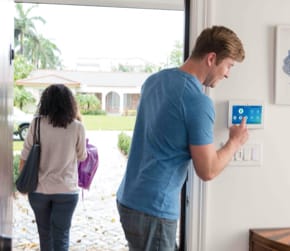My home was robbed—what do I do?
Your home is supposed to be your safe place—a space that belongs to you and those you love. When someone invades that space, the effects can be traumatic, especially if the burglary resulted in stolen valuables and property damage.
In the wake of a home burglary, it can be hard to push past the initial shock and the wave of emotions that follow. But there is a very simple process you can follow to report the incident and eventually put it behind you. Read on to learn what to do after a home burglary and how you can protect yourself in the future.














